|
Centrip Editorial Board
Sightseeing in Ono City's Castle Town

Echizen Ono Castle, famous as the Castle in the Sky, watches over the castle town of Ono City. Referred to as Hokuriku's "Little Kyoto," the town is brimming with a Japanese historical atmosphere, and in recent years, new activities have led to the creation of a series of photogenic spots, a trend growing in popularity among all ages. This article introduces recommended content for sightseeing in the town, focusing on Echizen-Ono Castle, samurai residences, and places to experience Ono City's famous water and brewing culture.
Are the World of Comics and Movies a Reality Soon?
- Echizen Ono Castle
- Former Samurai Residence of the Uchiyama Family: Beautiful garden and photogenic seasonal paper sliding doors
- Former Samurai Residence of the Tamura Family: A popular and photogenic spot
- Echizen Ono Yui Station and Yuirakuza
- Nomura Soy Sauce and Ono's famous Soy Sauce Katsu Don (pork cutlet on a bowl of rice)
- Sake breweries in the Castle Town: Nanbu Sake Brewery
- Directions from Nagoya to Echizen-Ono
- Wrap-up
Echizen Ono Castle
Echizen Ono Castle is nestled in the center of the Ono Basin, surrounded by high mountains, and stands atop the 249-meter-high Kameyama Mountain commanding a panoramic view of the entire city of Ono. The castle was built by Nagachika Kanamori, a chief vassal of Nobunaga Oda, during the Warring States Period and later became the residence of the Doi clan, feudal lords of the Edo period. The present castle tower was reconstructed based on illustrations and other resources in 1968 with the donation of Sada Ogiwara, a former samurai family member.
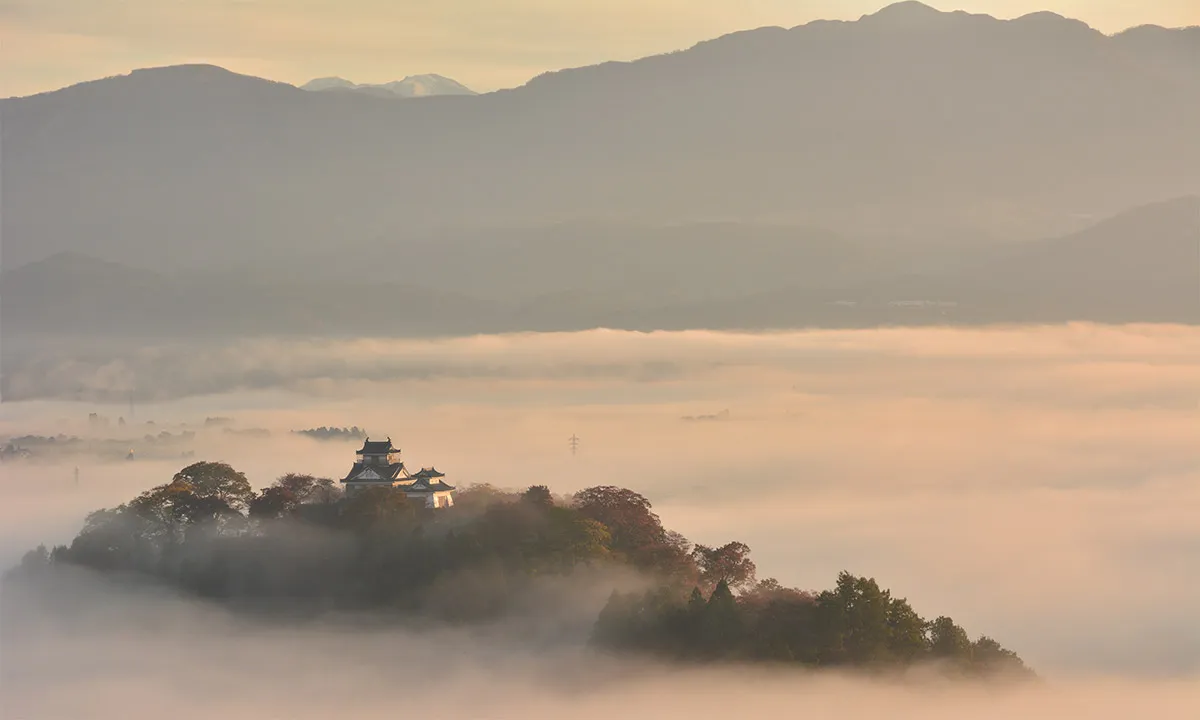 Castle in the Sky
Castle in the Sky
From late fall to spring, a sea of clouds descends on the city of Ono, leaving only Echizen Ono Castle on its mountaintop perch to emerge above the clouds and become the Castle in the Sky. This mystical scene only appears roughly ten days out of the year and is a highly-sought vista for photographers and tourists alike. Mt. Inuyama, about 1 km west of Echizen Ono Castle, is the best spot for photographing the Castle in the Sky and attracts many enthusiasts who come to capture the perfect photo.
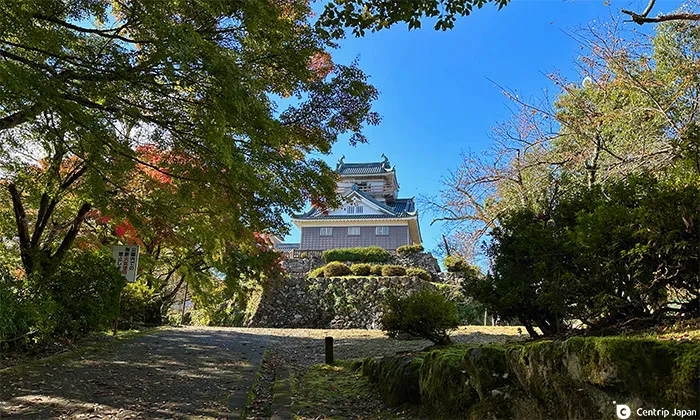 The keep of Echizen Ono Castle
The keep of Echizen Ono Castle
 It's a bit of a climb to the keep
It's a bit of a climb to the keep
But don't fret Echizen-Ono Castle is more than just the Castle in the Sky. The path to the castle keep has several routes that make for pleasant hiking and are beautiful, with cherry blossoms in spring and autumn leaves in fall.
 It takes about 20 minutes
It takes about 20 minutes
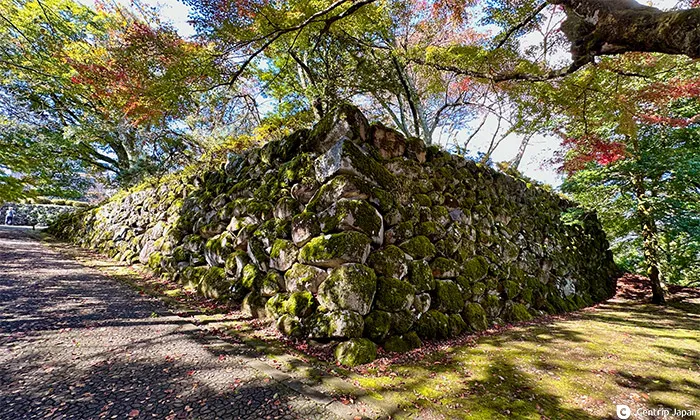 Stone walls from the castle's construction remain near the keep
Stone walls from the castle's construction remain near the keep
Moreover, Mt. Kameyama rises above the basin, and the view from the castle tower is outstanding! With a 360-degree view of Ono City, surrounded by mountains.
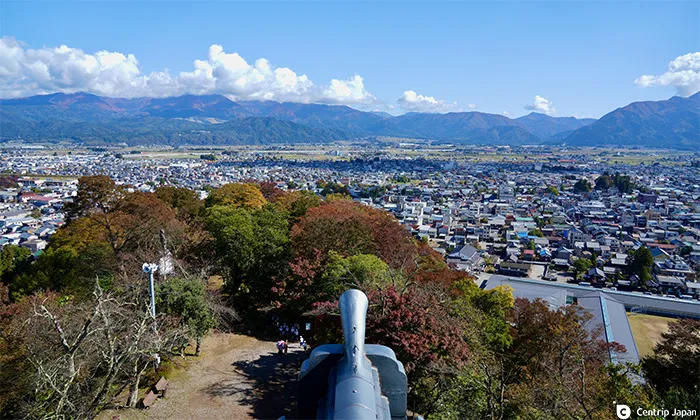 The view to the east
The view to the east
 The view to the south, the topography is visible in every direction
The view to the south, the topography is visible in every direction
The castle tower and the stone walls use a technique called "field masonry," which involves piling up natural stones as is. It retains its original appearance, and many points will appeal to castle lovers and history buffs.
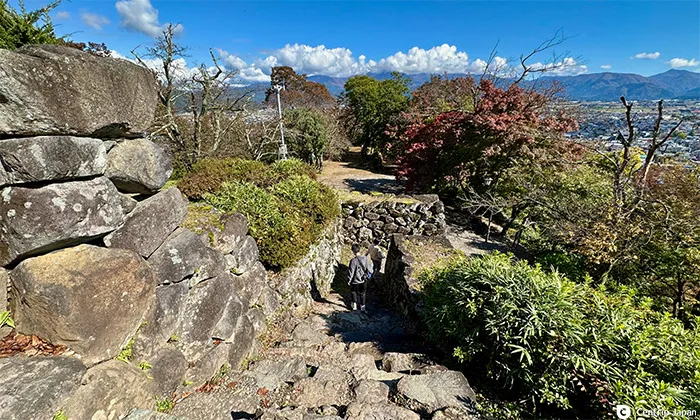 From the top, everything is in view
From the top, everything is in view
 From below not much to see
From below not much to see
The final stone staircase leading up to the castle keep is known as the "samurai ascent." The design makes it so defenders can see the enemy attacking, but the attackers cannot easily see the enemy defending from the top.
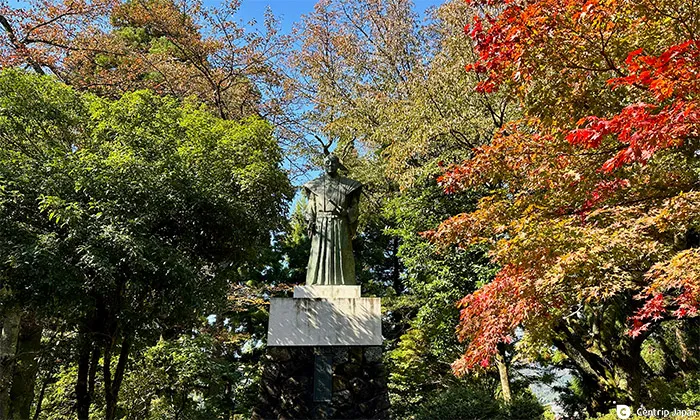 The statue of Lord Toshitada Doi
The statue of Lord Toshitada Doi
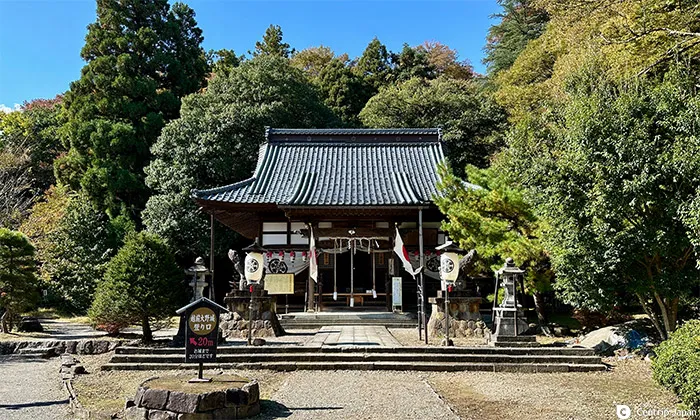 A shrine dedicated to Lord Toshitada Doi
A shrine dedicated to Lord Toshitada Doi
A statue of Lord Toshitada Doi, the seventh lord of the Ono Domain, stands on the castle grounds. He is known as the lord who restored the clan's finances through innovative reforms of the clan's administration, such as opening the "Onoya," which sold the clan's specialty products in various locations, and building the western-style ship "Onomaru" to transport the products. At the foot of the castle is a shrine dedicated to Toshitada Doi, Yanagino Shrine.
Former Samurai Residence of the Uchiyama Family: Beautiful garden and photogenic seasonal paper sliding doors
Depart and descend Mt. Kameyama, past Yanagino Shrine, and down to the castle town. Here you will find a historic castle town. Nearby are the samurai residences of important vassals who supported the Ono clan, open to visitors.
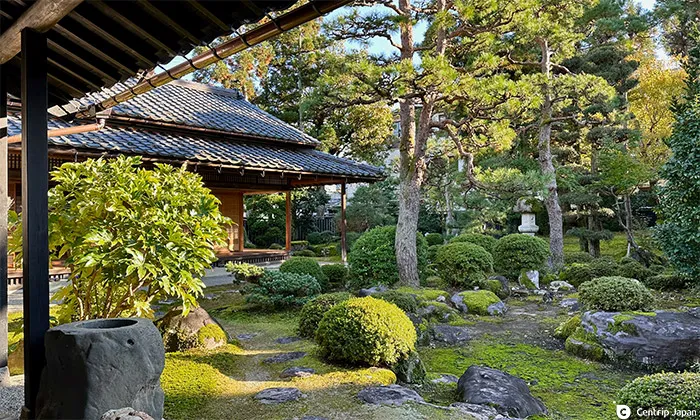 Beautiful Japanese gardens to walk
Beautiful Japanese gardens to walk
 Garden views to enjoy from the guestroom
Garden views to enjoy from the guestroom
The former residence of the Uchiyama family is a perfect example of a samurai residence. It was restored in memory of the family's achievements in support of Lord Toshitada Doi and his brothers.
 The main building of the Uchiyama family
The main building of the Uchiyama family
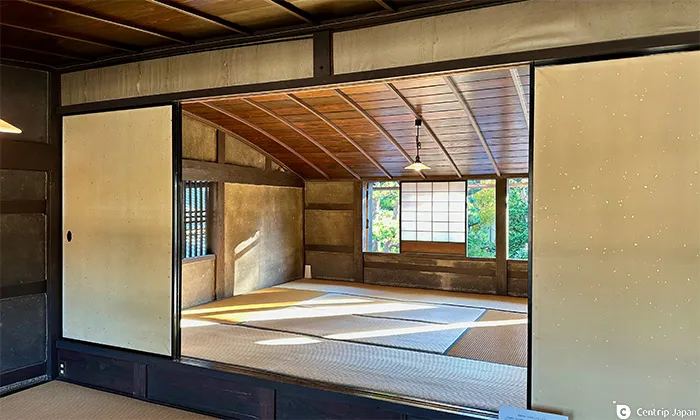 The ceiling in the upper room of the guestroom is very low
The ceiling in the upper room of the guestroom is very low
The house has a high ceiling in the guest room on the first floor for entertaining guests, and the living areas on the second floor are smaller. The building bears the care of a samurai family, and the beautiful moss in the Japanese garden is one of the house's highlights.
 Summer-themed paper sliding doors popular for photographs
Summer-themed paper sliding doors popular for photographs
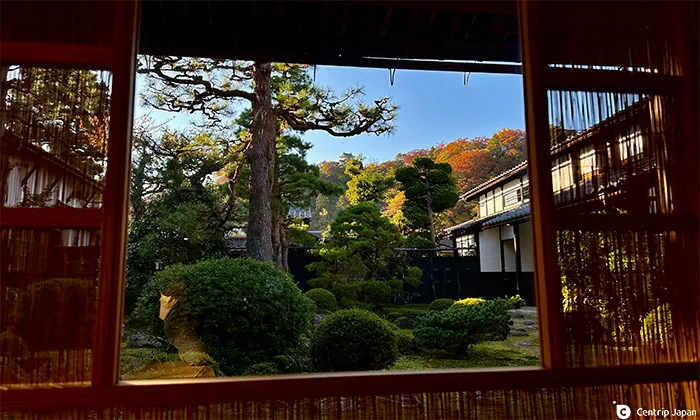 Echizen Ono Castle seen through shoji screens
Echizen Ono Castle seen through shoji screens
The detached teahouse-style drawing room, connected to the main building, was added in the Taisho period (1912-1926). Each season, the appearance of the drawing room changes, with summer screens between spring to fall and colorful screens appearing in winter, making the room popular among photographers. Cool, summer screens with window cut-outs allow visitors to view the castle keep of Echizen-Ono Castle while inside.
Former Samurai Residence of the Tamura Family: A popular and photogenic spot
About 200 meters north of the Uchiyama Residence is Tamura Residence.
The Tamura family moved into this farmhouse at the end of the Edo period (early 19th century) and converted it into a samurai residence. It is an important historical asset and conveys the style of samurai residences of the time. An earthen mound built to prevent enemies from entering Echizen-Ono Castle remains in the garden.
 Pinwheels line the street on the approach
Pinwheels line the street on the approach
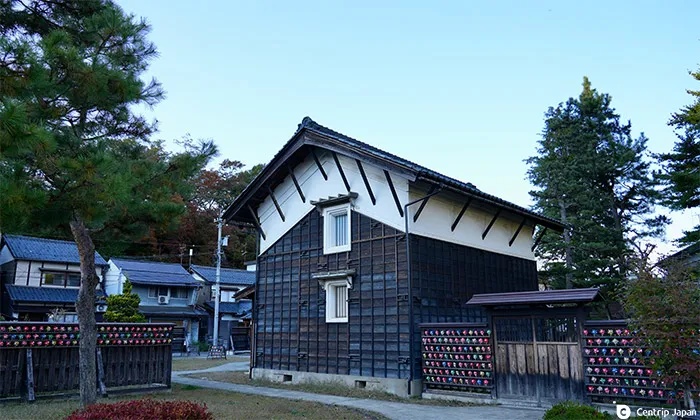 The eaves are supported by pillars to withstand the weight of snow
The eaves are supported by pillars to withstand the weight of snow
The Tamura Residence is a valuable cultural asset and is now a photographic spot representative of the Hokuriku area as the "samurai residence of pinwheels". The 2,000 pinwheels displayed throughout the house are a sight to behold. The contrast between the simple color of the samurai residences and the colorful primary-colored windmills is vivid and makes the entire building feel like a piece of modern art.
 Like a work of modern art
Like a work of modern art
 Make your own when you visit
Make your own when you visit
After entering the mansion and sitting in front of the pinwheel shelves, you can capture impressive photographs of figures silhouetted against the gently streaming light through the colorful pinwheels. Pinwheels are available for purchase (¥100 ea.) Be sure to share your favorite photo on social networking sites.
Echizen Ono Yui Station and Yuirakuza
Echizen Ono Yui Station is the sightseeing base of the city and a convenient starting point to explore Echizen Ono Castle and the castle town (free parking is also available). Incidentally, "Yui" is the symbol of Ono City and represents the traditional Japanese system of people helping each other and a place where people can come and go.
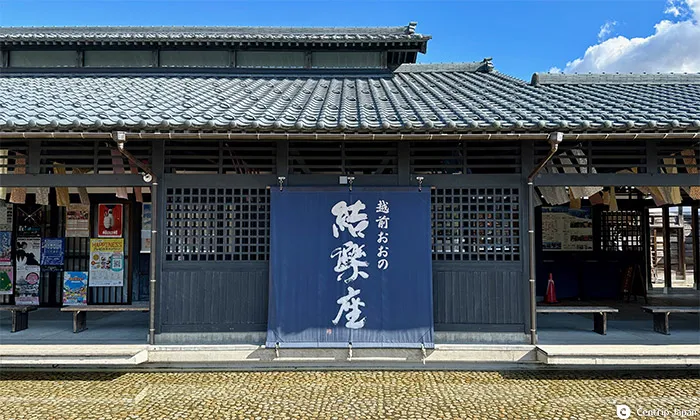 Yuirakuza, a seller of Ono City's specialty goods
Yuirakuza, a seller of Ono City's specialty goods
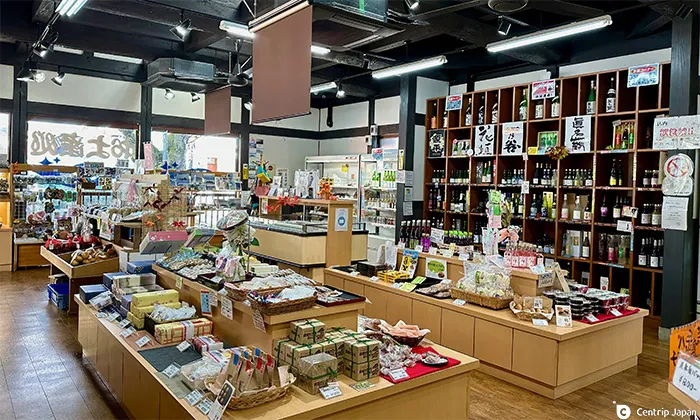 For souvenirs, you can't go wrong here
For souvenirs, you can't go wrong here
Yui Station has a resting area modeled after a samurai residence and Yuirakuza, a purveyor of Ono City's specialty goods. Yuirakuza's corridors, decorated with approximately 200 tenugui hand towels, are available for a limited time and look great.
 Colorful tenugui hand towels in the corridor
Colorful tenugui hand towels in the corridor
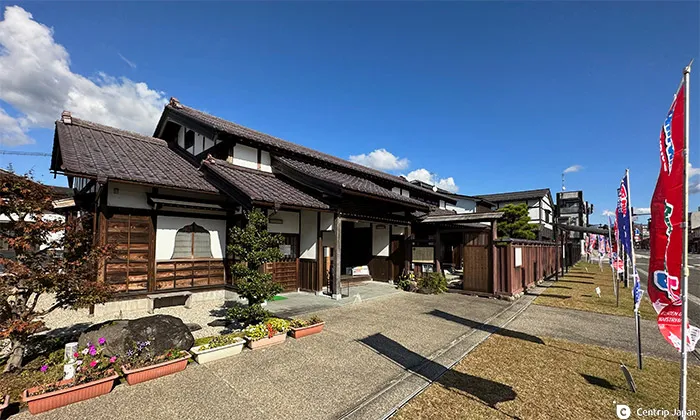 Even the free rest area is an authentic samurai residence
Even the free rest area is an authentic samurai residence
Nomura Soy Sauce and Ono's famous Soy Sauce Katsu Don (pork cutlet on a bowl of rice)
Ono City is a town famous for its water, with springs throughout. Industries like brewing sake, soy sauce, miso, and other products that take advantage of this water, have historically flourished in Ono City. Visiting long-established breweries while strolling through the castle town is a great way to see the city.
Nomura Soy Sauce made its living making vats in the Edo period (1603-1867) and began brewing soy sauce and miso using these vats in the early Meiji period (late 19th century). It still brews soy sauce to this day.
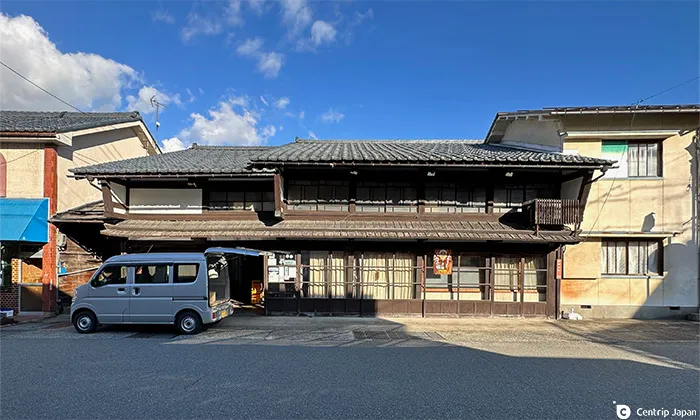 The storefront of Nomura Soy Sauce
The storefront of Nomura Soy Sauce
 A view of the inside of the store
A view of the inside of the store
Soy sauce is an essential part of Japan's food culture, and many people do not know how it is made. In 2016, Nomura Soy Sauce opened the Jyuyemon Brewery Tour, where parents and children can learn about making soy sauce together.
 Akishi Nomura, the sixth generation, explains the stirring process.
Akishi Nomura, the sixth generation, explains the stirring process.
 Don't be surprised by the size of the barrels (They have even bigger ones!)
Don't be surprised by the size of the barrels (They have even bigger ones!)
At the brewery tour, visitors receive a lecture on the soy sauce brewing process and get to try their hand at kai-ire (stirring the mash) to accelerate fermentation. Actual soy sauce making takes over a year, but visitors can enjoy making their original soy sauce here in a more simplified way, including bottling and label making (*The brewery tour is closed as of November 2022 and will reopen in the spring of 2023 or later).
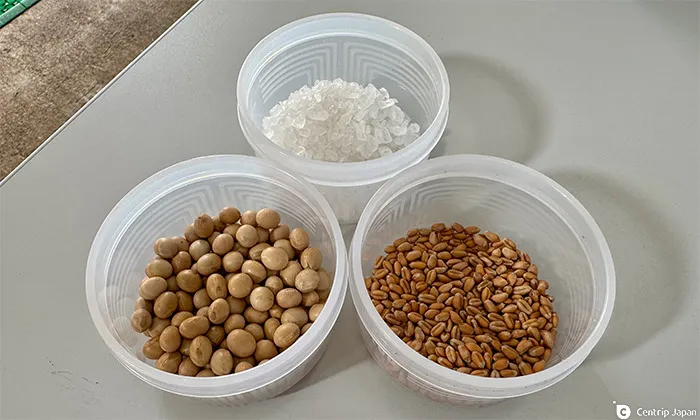 Can you ace the soy sauce brewing quiz?
Can you ace the soy sauce brewing quiz?
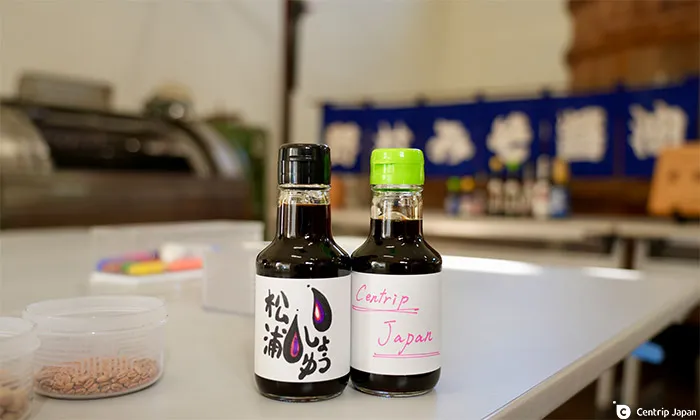 Centrip Japan's original label
Centrip Japan's original label
The soy sauce katsu-don was an attempt to create a unique regional dish using Ono City soy sauce. Sauce Katsu-don was originally a gourmet dish in Fukui Prefecture, but in Ono City, they wanted to create a dish that had unique characteristics.
To make Ono City's soy sauce katsu-don the cutlet must be served using cutlets and vegetables and uses soy sauce produced in Fukui Prefecture. More than ten years have passed since its creation, and it is now firmly established as a staple delicacy in Ono City.
 Uomasa cafe faces the old highway
Uomasa cafe faces the old highway
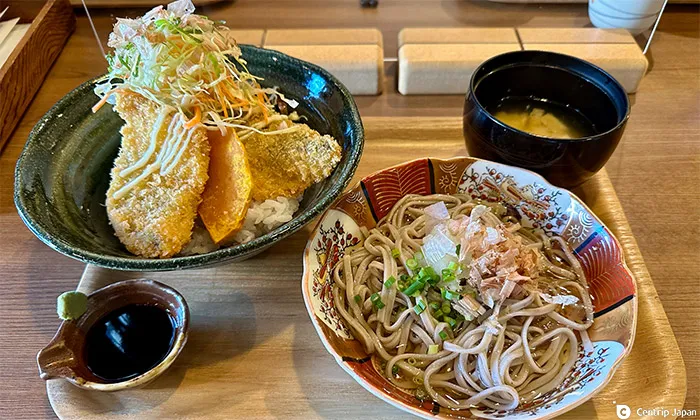 Soy sauce katsu-don made with aged mackerel
Soy sauce katsu-don made with aged mackerel
Soy sauce katsu-don is in many restaurants in the city, like Uomasa Cafe. The restaurant was once a long-established fish shop and boasts fish dishes, like soy sauce katsu-don made with mackerel instead of pork.
Sake breweries in the Castle Town: Nanbu Sake Brewery
In a castle town where people gather and an abundance of freshwater springs, sake brewing is bound to flourish. In the castle town of Ono City, there are four sake breweries within a radius of several hundred meters: Nanbu Sake Brewery, Uno Sake Brewery, Manazuru Sake Brewery, and Genpei Sake Brewery.
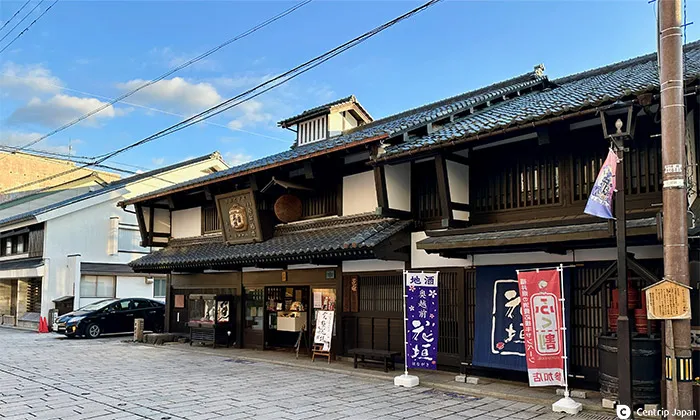 Nanbu Sake Brewery facing Shichiken Street
Nanbu Sake Brewery facing Shichiken Street
 Hanagaki is the representative brand of Nanbu Sake Brewery
Hanagaki is the representative brand of Nanbu Sake Brewery
One such brewery, Nanbu Sake Brewery, known for its brand Hanagaki, has a store facing Shichiken Street, one of the most well-preserved old streets in the castle town of Ono City. The main building, designated as a registered tangible cultural property, is a traditional townhouse in Ono City. The interior is not open to the public, but visitors can see the sliding door paintings from the late Edo period inside the store and experience its history.
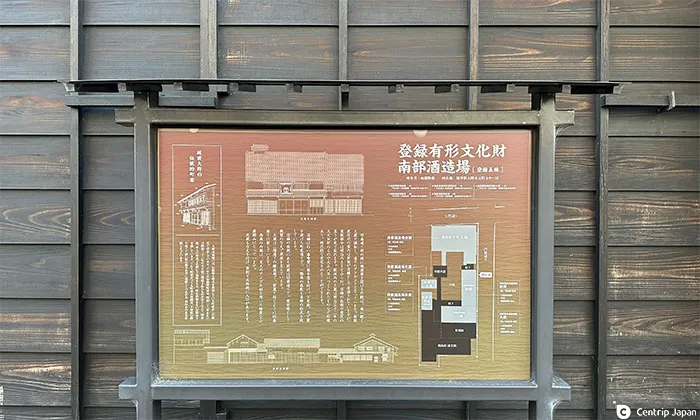 The main building and part of the warehouse are cultural assets.
The main building and part of the warehouse are cultural assets.
 Sliding door painting of cranes from the Edo period
Sliding door painting of cranes from the Edo period
Nanbu Sake Brewery focuses on producing aged sake and will soon begin selling 30-year-old sake, a rare product attracting attention. Some products are only available in the store, so be sure to visit.
 Uno Sake Brewery Ichinotani brand
Uno Sake Brewery Ichinotani brand
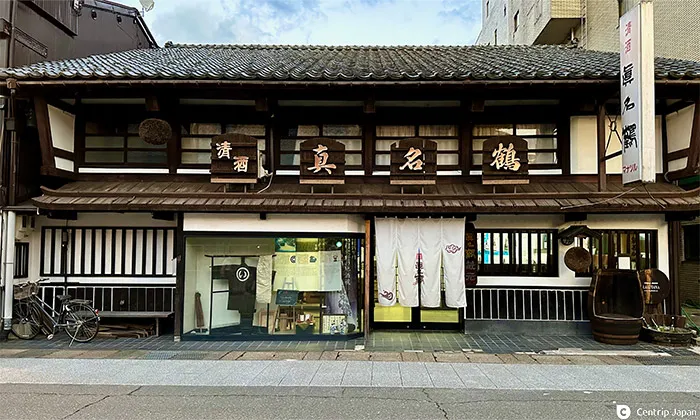 Manazuru Brewery
Manazuru Brewery
The other breweries are within walking distance of the Nanbu Sake Brewery, so visitors can enjoy tastings at each brewery to get a feel for the flavor of the sake of Ono City.
Directions from Nagoya to Echizen-Ono
It is easy to reach Echizen-Ono from Nagoya by car. From the Nagoya IC of the Tomei Expressway, take the Tokai-Hokuriku Expressway via Ichinomiya JCT, exit at the Shirotori IC, and then take National Route 158 for approximately 2 to 2 hours and 30 minutes. All the locations in this article are within walking distance from Yui Station. First, you should head for Yui Station, with free parking available.
By train, take the Hokuriku Line Express from Nagoya Station or an express bus from the Meitetsu Bus Center to Fukui Station, then take the JR Echibihoku Line (*Translation: Echizen-Ono Station) and get off at Echizen-Ono Station. If you take an express bus, it will take about 3 hours and 50 minutes.
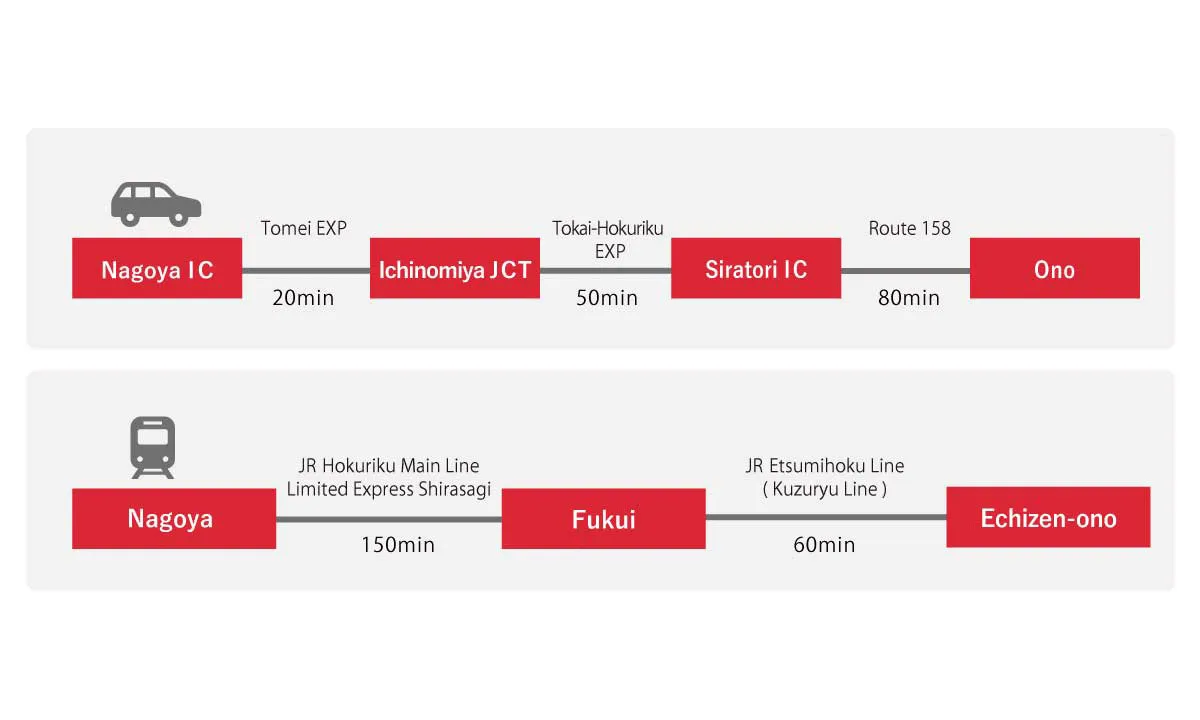
Wrap-up
Driving from Nagoya to Ono City, you will find Gujo Hachiman, where you can enjoy strolling around another beautiful castle town, and Shirotori, where you can enjoy Nagashi Somen and the Hakusan faith culture. Furthermore, along Route 158 from the Shirotori IC to Ono City is Lake Kuzuryu, which offers a variety of lake activities, and Holossa, where visitors can excavate fossils. You can visit Ono City in conjunction with the unique surrounding tourist attractions.
Click here to get the latest information on Central Japan.Centrip Japan - Nagoya and Chubu Information

